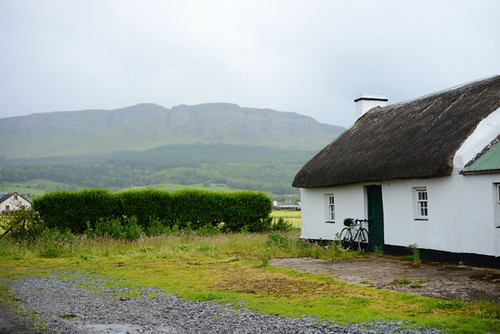
The mountain is impossible to ignore. I see it from my window first thing in the morning and last thing before the light fades - nearly at midnight on a summer's night. I see it when I ride to and from town, and when I ride in loops around the countryside. No matter where I go and what I do, the mountain is always there, an enormous living, breathing thing, looming over the landscape.
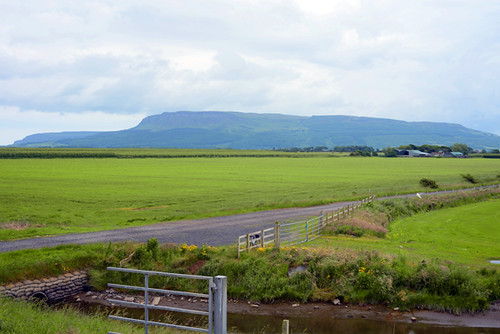
At 1,263 feet, Binevenagh (pronounced "be-NEvna") is actually quite small. But it cuts a dashing figure on the Limavady landscape. It stands alone, outlined crisply against the ever-changing sky. Seen from the seashore, it resembles a crumpled old hat (or the snake that ate the elephant drawing from the Little Prince). From other vantage points, a jagged edge protrudes. Steep on all sides, it is topped with a large lumpy plateau, covered with forests and meadows.
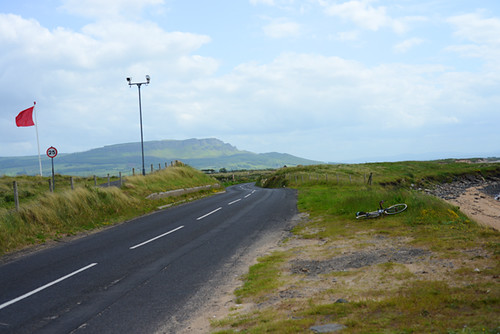
Gazing at the mountain everywhere I went, all I could think of was climbing it. I hesitated at first. It felt so special I did not want to rush it. But finally one morning I woke up and knew it was time. The atmosphere was festive.
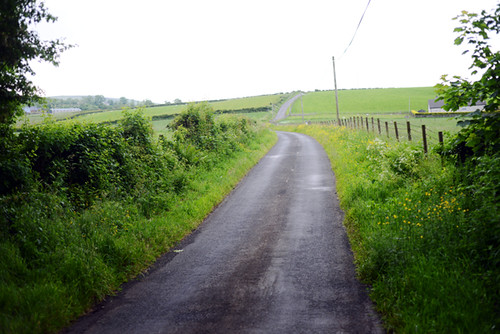
The road up Binevenagh starts directly from the house. But a friend suggested I take a detour - swinging around the coast, then turning onto another road to give myself a bit of a warmup before the climb. "Even with that frying pan of yours, you'll need it!" He was referring to the 11-36t cassette my bike was decorated with.
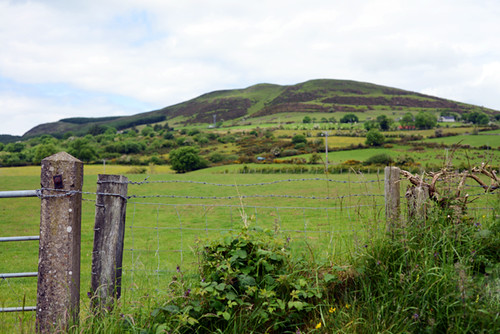
The ascent is relatively short and steep: 1,045 feet of climbing over 3.5miles. It is continuous climbing, much of it at a 10%+ grade, the road steepening, letting up, then steepening again. Right off the bat, the pitch was tough. I went at a good rhythm, but after a mile stopped to take a breather at a crossroads. Most of the mountain continued to tower ahead; I had hardly chipped away at it.
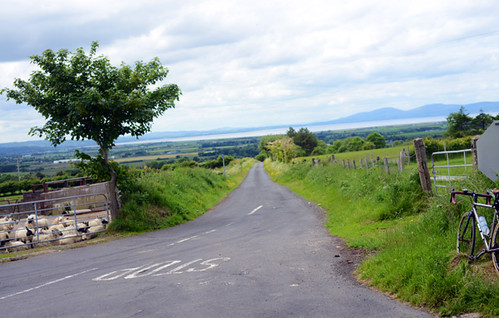
But when I turned around, the evidence of the mile I'd already done was in plain sight: A sharp dip, and the hills of Donegal spread out behind a shimmering sliver of water. Still narrow from this vantage point, the Lough Foyle is a saltwater inlet that separates the western part of Northern Ireland from the northwestern tip of the Republic. The border between the two nations is rather picturesque here. Climbing Binevenagh, the view becomes more breathtaking with each push of the pedals. And the sheep become more frequent.
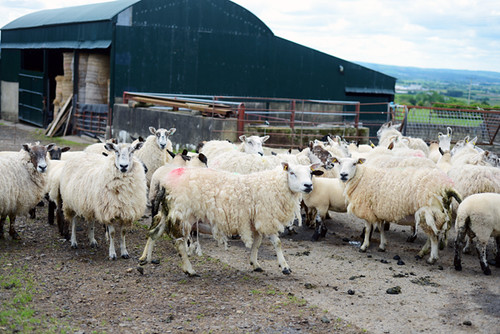
How to describe this climb... The pitch was doable in my low gears. But the continuous steep grade made it tiring. I switched between my 3-4 lowest cogs and stood up occasionally (something I've finally learned to do), and tried not to get overwhelmed. I ignored my legs and focused on the scenery, aiming my eye at the top.As I kept going, the sheep were like loyal spectators. They looked at me with sympathy, understanding, encouragement. I was not miserable on the climb; it was a peaceful and oddly calming experience.
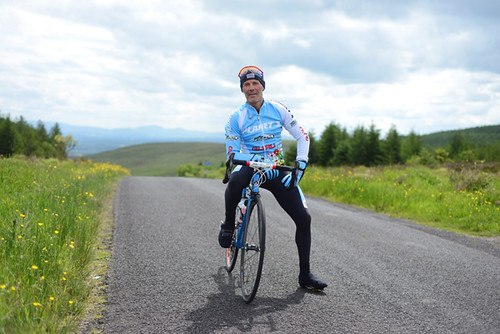
For some time, the sheep were my only company. Until, out of nowhere, a man in blue pulled up next to me. Even as I spotted him in my peripheral vision, I knew he was a Cyclist. Slender and agile, he moved so fluidly, it looked like liquid pouring uphill. Riding next to me, he matched my pace effortlessly as we talked. He lived nearby and loved to train on this mountain. He was an endurance cyclist, and rode in the Race Across America last year. Before we parted ways at the top, he introduced himself: Joe Barr.
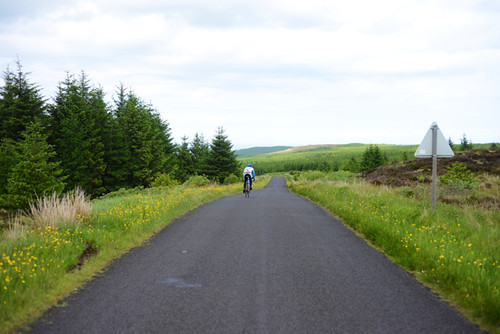
I watched him disappear down the other side of the mountain, as beautifully as he climbed. Later I learned he was a retired Irish pro-racer.
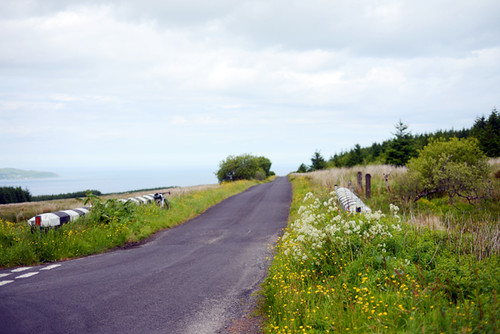
The top of Binevenagh... The plateau covers a large area, and the highest point is somewhat uneventful. A painted bridge over a stream, a scraggly meadow with Queen Anne's Lace and buttercups, a forest in the background, and lots of sky with very distant views of water. From here on, there are several options for descending. One starts right away and is fairly steep and twisty, consistently throughout. Another is further down the plateau. It is longer and gentler most of the way, until it ends in a sudden, sharply winding vertical drop to the sea at the very end.
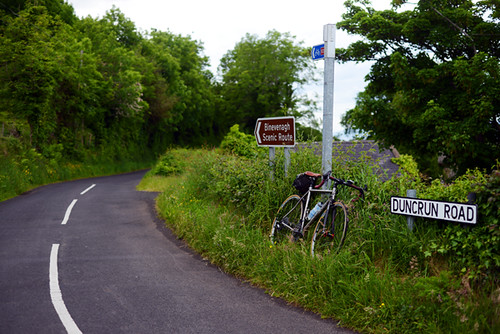
To start with I chose the first descent. The steep, narrow, winding road pushed my comfort zone. I was in control around the bends, but had to work on myself to keep calm. I did breathing exercises to keep from shaking and destabilising the bike. Descending on the left side of the road felt intuitive; my brain had already switched over.
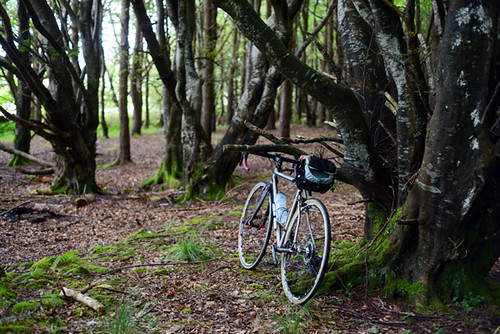
This descent was a heavily shaded one, winding its way through a forest.
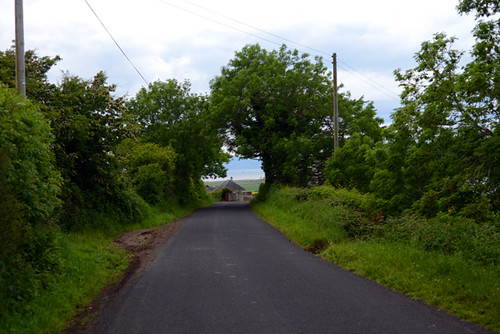
But after every bend, a view opened up, each more beautiful than the next. If it is possible to feel both cautious and relaxed at the same time, that is how descending this road felt.
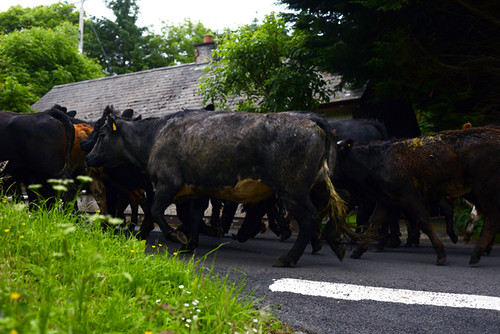
Cars passed me up the road occasionally, the drivers waving, friendly - something I am still getting used to here. Toward the bottom, one driver was trying to communicate something urgently, which I did not understand - until I saw a row of pointy brown ears up ahead. Quickly I stopped, dismounted and clambered up the side of the road to let the herd of cows pass.
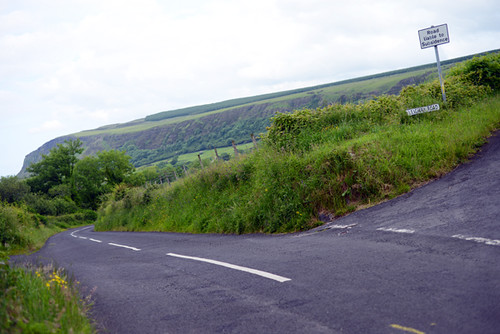
The final winding stretch dumped me onto the coastal road unceremoniously.Feeling sad it was over, I repeated the loop, then crawled home, spent and drunk on mountain air.
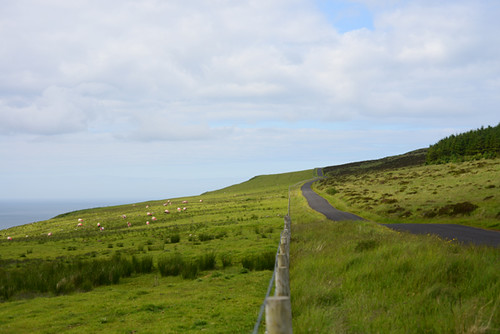
Several days later, I climbed Binevenagh again to try one of the other descents. The road along the plateau offered wide open views of both the Lough Foyle and the North Atlantic.
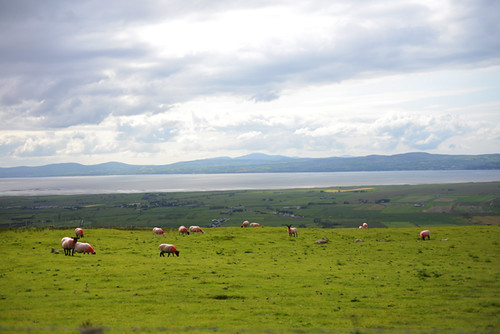
I rode through a dreamscape of hot-pink sheep grazing upon neon green grass, as the sun came out over the hills of Donegal.
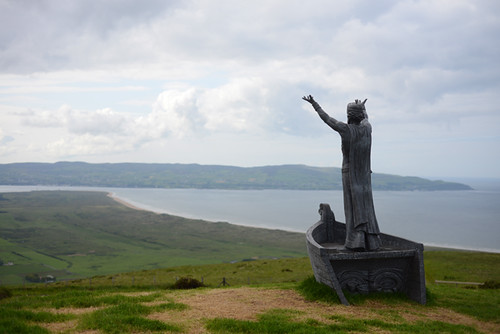
At the far end of the plateau stood "the boat man," as the locals refer to him. He isManannán mac Lir, a god of the sea - a new statue the local council has erected just in the past week. Facing Magilligan Point (entrance to the Lough Foyle on the Northern Ireland side) - the mythical wood-carved figure spreads his arms over land and water of the bordering nations.
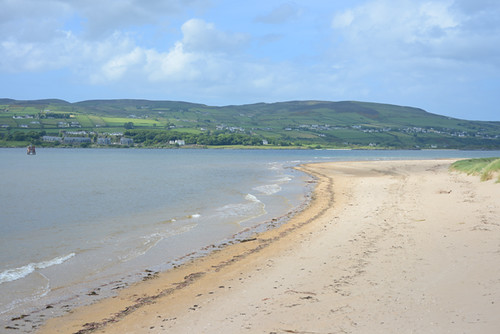
Standing there, I remembered being at Magilligan Point, at the ground level, and looking up at the mountain from there. Some form of symmetry had been achieved.
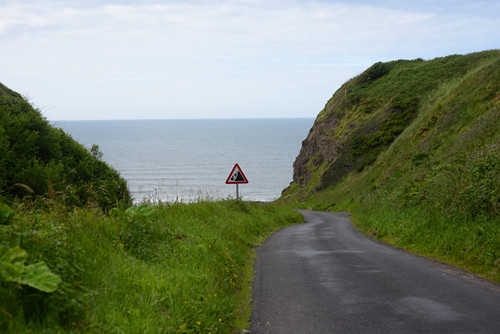
The descent was long, tame and idyllic, rolling through farmlands. But at the end came the stretch I had been warned about: This section winds tightly, down a steep grade.I was advised to either walk or ride the brakes once I saw the crumbling rocks sign.Over the course of two loops, I tried both methods. Riding slowly with good brakes is actually a bit easier than walking the bike.

After some S-bends, another sharp bend follows before a vertical drop onto the main road across from the water.

The spot is Downhill - defined by the magnificent view of the Mussenden Temple - a round structure at the edge of a cliff, which a nobleman had built for his niece... with whom he may or may not have had an affair with. The niece died before the temple was finished, infusing the story with an extra air of tragic poeticism.
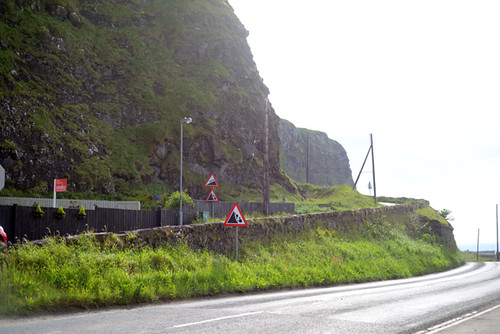
I looked back at the road I had come down. I was not as shaken as I thought I'd be by the descent. But with the rush and the beauty of it over, I felt lost - so much emotion can build up along these stretches, and it has nowhere to go. Maybe that is why the cliffs looked especially beautiful in the evening light. And maybe that is why I put all my remaining energy into the 10 miles home along the flat coastal road. Big ring, small cog, setting sun, burning legs, cold air, sprays of water, and Binevenagh towering over it all. Turning the pedals madly as I raced home, I already longed to be up there again.
No comments:
Post a Comment